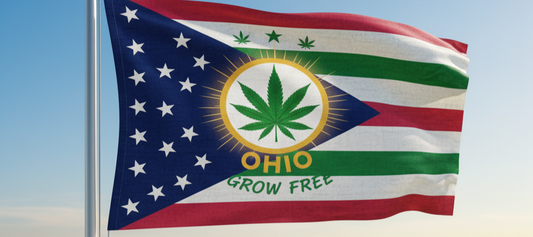What is Decarboxylation
Decarboxylation: Unlocking the Power of Your Cannabis
Ever wonder why you can’t just eat a handful of raw cannabis flower and get high? The answer lies in a crucial process called **decarboxylation**. While the name sounds complicated, it’s actually a simple and essential step for anyone who wants to make edibles, tinctures, or oils at home. In short, decarboxylation is the process of using heat to "activate" the cannabinoids in your cannabis. Without it, the plant's compounds stay in their raw form and have little to no psychoactive effect. Let's break down the science and show you how to do it yourself.
The Simple Science Behind It
In its raw form, cannabis doesn't contain the THC you know and love. Instead, it contains an acidic cannabinoid called **THCA** (tetrahydrocannabinolic acid). It also contains **CBDA** (cannabidiolic acid), the acidic precursor to CBD. These acidic compounds don't produce the intoxicating or therapeutic effects that their non-acidic counterparts do. Decarboxylation works by heating the cannabis, which causes the acid molecule (the "A" in THCA and CBDA) to detach. The result? THCA converts into the psychoactive **THC**, and CBDA converts into **CBD**, unlocking the full potential of the plant.
Why You Absolutely Must Decarb Your Cannabis
Think of decarboxylation as the key that unlocks the power of your weed. If you skip this step, you’ll get little to no effect from your edibles or infused oils. The human body can’t efficiently absorb or process the acidic forms of these cannabinoids. Decarbing makes them bioavailable, meaning your body can actually use them. Whether you're making canna-butter for brownies, infusing oil for a tincture, or just preparing flower for a recipe, decarboxylation is the non-negotiable first step.
How to Decarb Cannabis at Home
Good news: decarbing is easy! All you need is an oven, a baking sheet, and some patience. Here's a simple, foolproof method:
- Preheat your oven to 240°F (115°C). Low and slow is the name of the game. A lower temperature helps preserve the delicate terpenes, which are responsible for the flavor and aroma of your cannabis.
- Prepare your cannabis. Break up your flower into medium-sized pieces. You don't want to grind it into a fine powder, as this can cause it to burn. A coarse grind is best.
- Spread it on a baking sheet. Place a sheet of parchment paper on your baking sheet and spread the cannabis evenly across it. You can also cover it loosely with foil to help trap the terpenes.
- Bake for 30-40 minutes. Place the baking sheet in the oven and let it do its thing. After 20 minutes, give the cannabis a gentle stir to ensure it's heating evenly. You'll know it's done when the color has changed from a vibrant green to a light, toasty brown.
- Let it cool. Once the time is up, remove the cannabis from the oven and let it cool completely. It should be dry and slightly crunchy. You can now use it to infuse your butter or oil!
Final Thoughts...
Decarboxylation is a vital part of the process for creating powerful and effective cannabis products. It’s the simple science that transforms raw plant material into a potent ingredient, and it's a fundamental skill for any aspiring canna-chef. So next time you're whipping up a batch of edibles, don't skip this crucial step!





